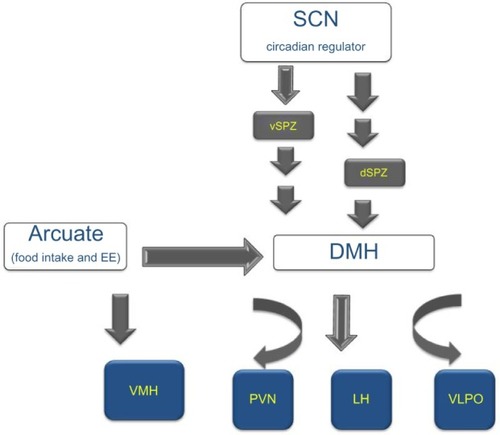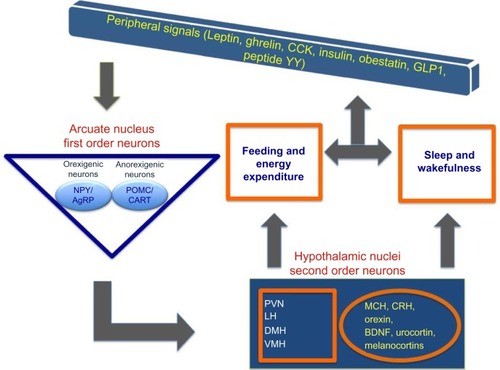Figures & data
Table 1 Central and peripheral signals involved in energy balance and sleep regulation



